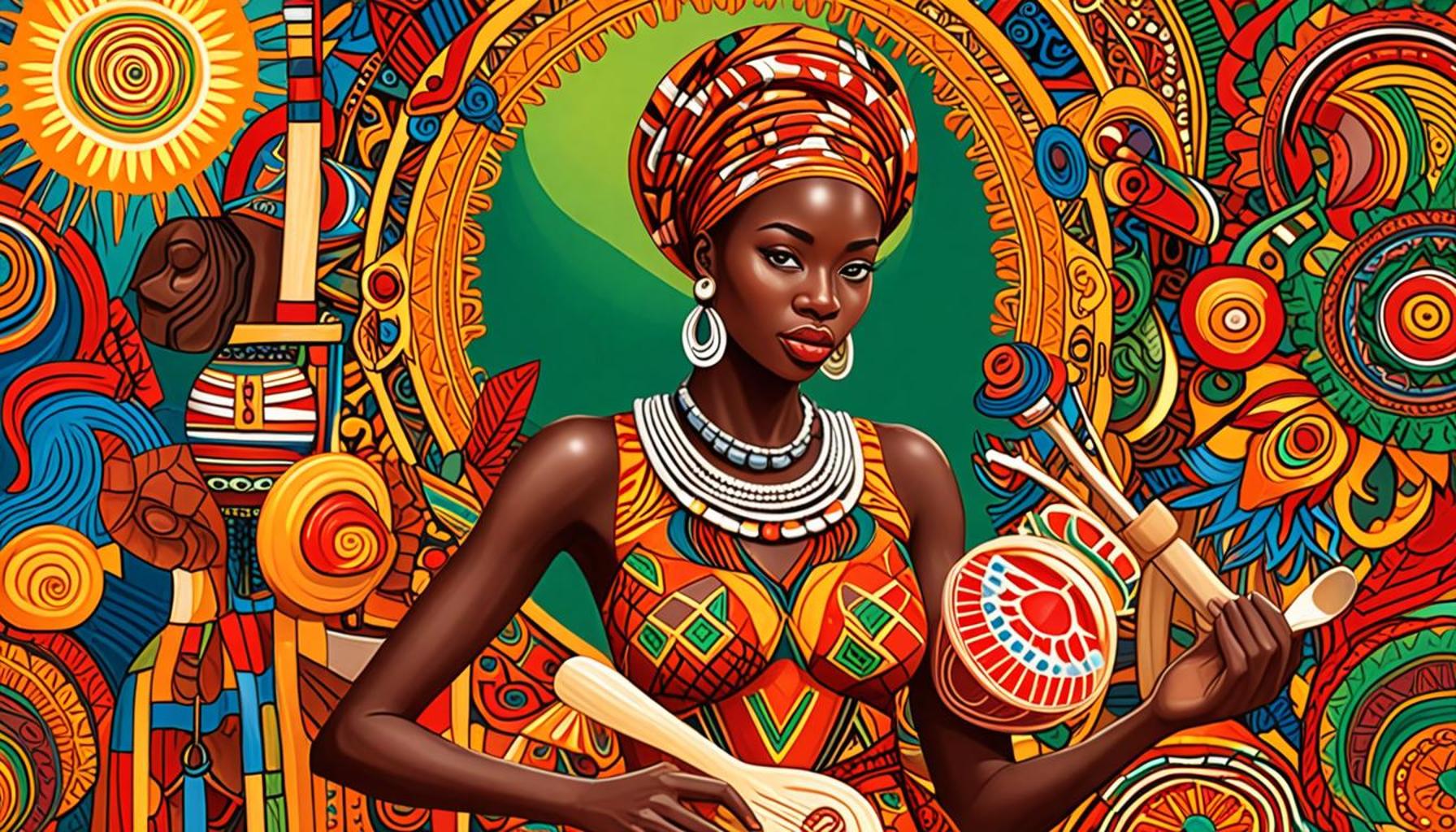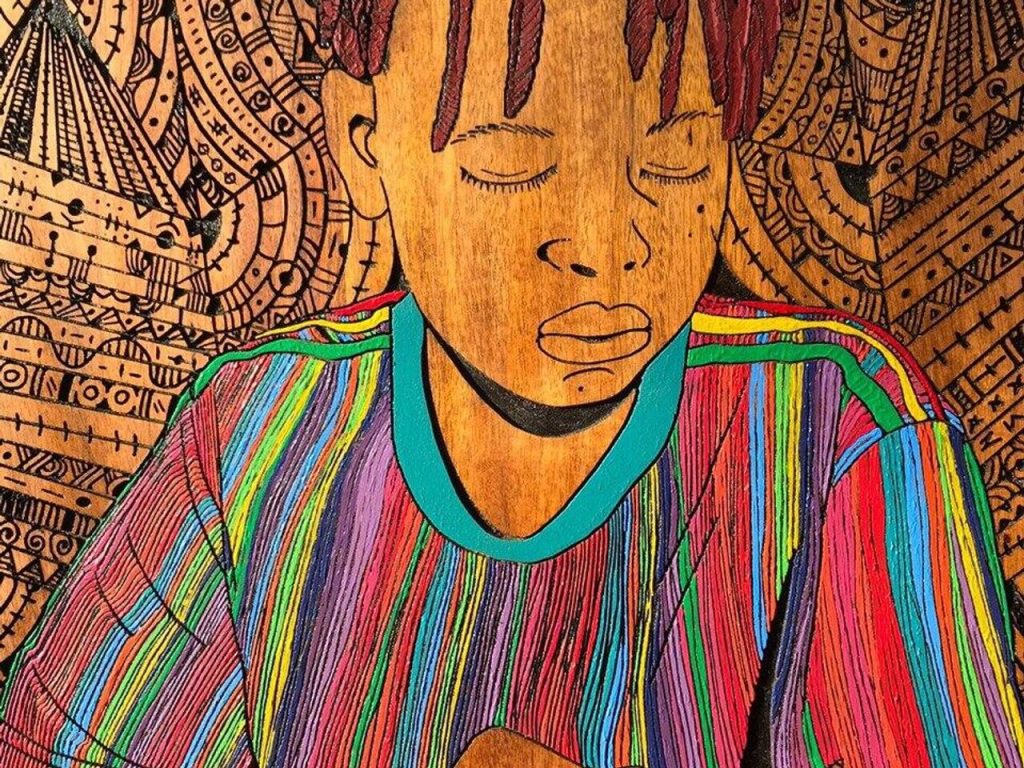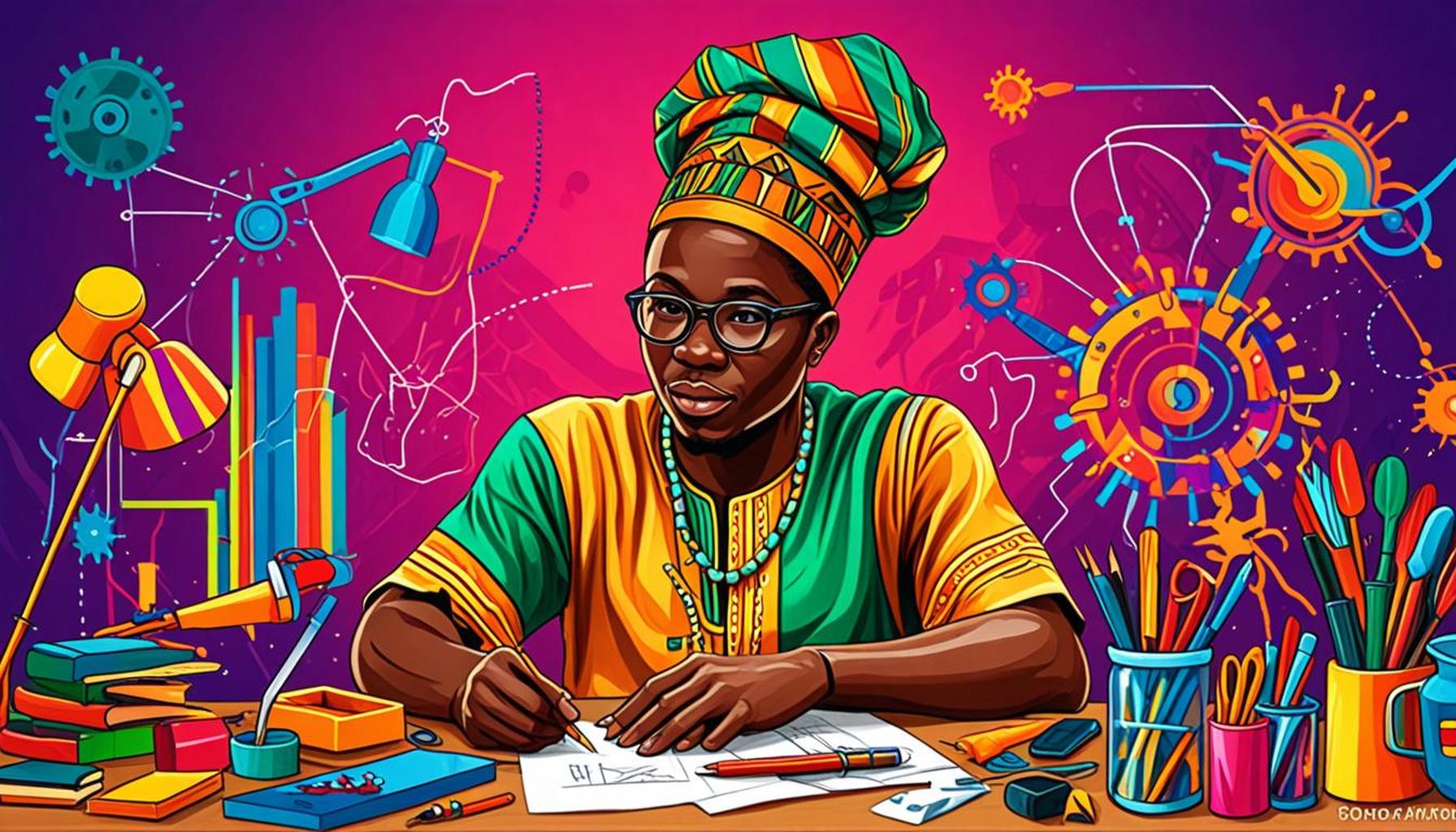The Influence of Cultural Traditions on the Innovation of Contemporary Craftsmanship in Nigeria

Exploring the Interplay of Tradition and Innovation in Nigerian Craftsmanship
Nigeria’s cultural heritage is a treasure trove of artistic traditions that continue to shape the nation’s contemporary craftsmanship landscape. This rich heritage is not merely a relic of the past; it acts as a vibrant foundation from which modern artisans draw inspiration, fostering a dynamic atmosphere where innovation and tradition coalesce seamlessly. The intricate beadwork of the Ibo people and the elaborate textiles of the Yoruba provide prime examples of how historic methods can inform and enrich current artistic practices.
Heritage Techniques
The enduring legacy of heritage techniques plays a pivotal role in contemporary craft. For instance, many artisans today meticulously handcraft items using techniques that have been carefully preserved over generations. Recognizing the beauty and intricate skill involved in traditional beadmaking, contemporary Nigerian designers like Nneka Faleti are employing these age-old methods while incorporating modern designs, thus giving these traditional crafts a fresh perspective. This reverence for heritage not only sustains cultural identity but also emboldens artisans to innovate within established frameworks.
Modern Materials
The incorporation of modern materials has revolutionized how traditional crafts are produced. Artisans are now experimenting with sustainable materials such as recycled plastics and organic dyes, resulting in creative hybrids that appeal to a global audience. For example, contemporary textile designers like Titi Ademola have adopted eco-friendly fabrics and innovative dyeing techniques to create garments that are both environmentally conscious and commercially viable. This shift illustrates a growing trend among craftsmen to embrace sustainability, thereby enhancing the marketability of their work while nurturing the environment.
Global Trends
The impact of global trends cannot be overstated in the context of Nigerian craftsmanship. As artisans engage with international styles and movements, they often blend these influences with local motifs, resulting in distinctive works that resonate well beyond Nigeria’s borders. This is exemplified in the rise of Afrocentric fashion, which marries traditional African prints with contemporary silhouettes, attracting attention from fashion enthusiasts worldwide. Designers like Lisa Folawiyo have artfully navigated this space, creating contemporary pieces that celebrate her Nigerian roots while appealing to a global market.
This remarkable ability to merge cultural elements with fresh ideas not only enriches the craft scene but also reflects broader issues of identity and sustainability. The intersection of these themes invites dialogue around the future of Nigeria’s artistic landscape and how it can retain its authenticity in an increasingly globalized world.

In conclusion, the interplay between tradition and innovation in Nigeria’s craftsmanship is not just about artistic expression; it is a vital discourse that addresses cultural identity, sustainability, and economic development. As we delve deeper into the narratives that define this artistic evolution, we unearth the stories of the artisans whose creativity and resilience continue to shape the nation’s cultural fabric.
SEE ALSO: Click here to read another article
Reviving and Reinventing Cultural Narratives
The nexus between traditional craftsmanship and contemporary innovation in Nigeria reveals a fascinating narrative of revival and reinvention. Artisans are increasingly aware that their works are not just individual pieces but rather representations of a rich communal heritage. This consciousness drives them to integrate cultural stories and values into their craft, making every creation a storytelling medium that speaks to both local and global audiences.
Cultural Significance in Craftsmanship
The cultural significance embedded in traditional crafts often serves as a source of inspiration for contemporary artisans. For instance, the use of traditional motifs in pottery or textiles can evoke memories of ancestral tales, rituals, and local landscapes. This continues to resonate with consumers who are increasingly looking for authenticity and depth in the products they buy. Additionally, artisans such as the Efik potters in Calabar not only create aesthetically pleasing items but also ensure that each piece pays homage to cultural narratives that have prevailed over centuries.
Techniques Passed Down Through Generations
Many contemporary craftsmen are keen on preserving techniques passed down through generations while simultaneously integrating modern aesthetics. Some traditional practices that have seen a resurgence include:
- Adire: This traditional Yoruba tie-dye technique is being reinvented by modern designers who blend it with contemporary fashion trends, thus creating unique pieces appealing to younger generations.
- Osun-Osogbo Festival Crafts: Artisans produce handicrafts that represent the themes of this ancient festival, infusing traditional myths into modern decor and jewelry items that cater to both local and international markets.
- Beadwork: Using intricate designs that date back to ancient rituals, contemporary bead artists fuse traditional patterns with modern styles, creating wearable art that reflects Nigeria’s diverse cultural fabric.
This intergenerational transfer of knowledge emphasizes not only technical skills but also ethical values centered on sustainability and community. Artisans are signaling that they view their role as custodians of cultural heritage, ensuring that traditions are not only preserved but are also dynamic and relevant in a changing world.
The Role of Collaborations
Collaborative efforts among artisans from different regions and disciplines are fostering a vibrant ecosystem for innovation in Nigerian craftsmanship. Initiatives that bring together artists, designers, and cultural historians facilitate a cross-pollination of ideas, empowering artisans to explore novel interpretations of traditional crafts. Events like the Artisan Market Lagos serve as platforms where traditional craftsmanship meets contemporary design, allowing artisans to collaborate and share best practices.
This collaborative spirit not only sparks creativity but also strengthens cultural ties, demonstrating that tradition and modernity can coexist harmoniously. As Nigerian artisans continue to push the boundaries of their craft, they highlight the importance of retaining cultural essence while adapting to global trends and demands.
The Influence of Cultural Traditions on the Innovation of Contemporary Craftsmanship in Nigeria
The intertwining of cultural traditions and contemporary craftsmanship is a profound aspect of Nigeria’s rich artisan landscape. Every region showcases its traditional artistry, often through the creative lens of skilled artisans who innovate while honoring their ancestral roots. These artisans merge age-old techniques with modern sensibilities, resulting in a unique blend that appeals to both local and global markets.
Distinctive materials and methods play a vital role in this innovation. For instance, the use of indigenous materials such as adire textiles from the Yoruba people incorporates traditional dyeing methods while allowing for modern design aesthetics. This fusion not only attracts a contemporary audience but also creates a sustainable model that respects and utilizes local resources.
Moreover, the stories embedded within these craft pieces often reflect cultural narratives, seeking to educate and inform consumers about Nigeria’s diverse heritage. Innovations in contemporary craftsmanship also encompass new mediums and technologies, allowing artisans to explore digital crafts or hybrid techniques that broaden their offerings. Social media platforms further enhance visibility, enabling makers to reach wider audiences and connect with diaspora communities longing for a taste of their cultural heritage.
This ongoing dialogue between tradition and innovation is crucial as it fosters a sense of identity and pride among Nigerian artisans, inspiring the next generation to carry forward these vibrant legacies while engaging in contemporary dialogues. The impact of such craftsmanship transcends commerce; it plays a significant role in cultural preservation and the promotion of Nigeria as a center for creativity on a global stage.
| Cultural Tradition | Impact on Craftsmanship |
|---|---|
| Traditional Techniques | Integrates age-old methods with contemporary styles, enhancing aesthetic appeal. |
| Material Usage | Emphasis on indigenous materials promotes sustainability and keeps cultural heritage alive. |
As these cultural influences continue to evolve, they provide a fertile ground for innovation while ensuring that the roots of Nigeria’s diverse cultural identity remain strong and celebrated in every handcrafted piece.
CHECK OUT: Click here to explore more
Embracing Global Trends while Honoring Heritage
In the contemporary landscape of Nigerian craftsmanship, the delicate balance between embracing global trends and honoring local heritage is a defining characteristic. Artisans are not merely replicating traditional techniques; they are ingeniously weaving them into modern narratives that resonate on a global scale. By doing so, they not only appeal to an international clientele but also create a dynamic interaction between cultural roots and global aesthetic movements.
Blending Traditional and Modern Designs
The blending of traditional and modern designs has led to the evolution of numerous craft forms in Nigeria. For instance, the adaptation of awu (woven textiles) has taken strides with contemporary designers incorporating traditional patterns into modern fashion silhouettes. These fabric innovations, while maintaining indigenous aesthetics, cater to the contemporary fashion market which is increasingly leaning towards ethical and sustainable choices.
Another notable example is in the woodcraft sector, where artisans in places like Jos are creating furniture that reflects traditional carving techniques while meeting contemporary functionality and design trends. This phenomenon illustrates the ingenuity of Nigerian artisans who are capable of creating pieces that seamlessly fit into modern homes without sacrificing their rich cultural lineage.
Market Demand and Cultural Authenticity
Global demand for products that emanate authenticity is pushing Nigerian artisans to re-evaluate their craft practices. The rise of eco-conscious consumers and cultural tourism has opened up new avenues for artisans to innovate while remaining true to their roots. As tourists flock to Nigeria to experience its rich culture, handcrafted items have become cultural souvenirs. Artisans are therefore motivated to ensure their products not only meet aesthetic standards but also tell a story that resonates with the experiences of both the local community and global visitors.
This rising demand for authenticity has also led to the advent of brands that focus on ethical craftsmanship. Companies such as Made in Nigeria spotlight artisans who use local materials and traditional techniques, thereby providing a platform for visibility while ensuring that cultural traditions remain intact. These brands emphasize the importance of cultural narratives, thus enriching the fabric of modern Nigerian craftsmanship.
The Impact of Technology on Craftsmanship
The advent of technology has become a game-changer in the field of craftsmanship in Nigeria. Innovations such as 3D printing and digital design software allow artisans to replicate traditional designs with unparalleled precision. Moreover, social media platforms serve as invaluable marketing tools, enabling artisans to showcase their work to a global audience. The hashtag campaigns centered around #NigerianCrafts have allowed craftsmen to build networks, share techniques, and promote their products to a wider demographic.
On the other hand, technology also provokes a discourse on authenticity. As artisans navigate the complexities of blending traditional methodologies with modern tools, they must remain vigilant against the dilution of cultural significance in their craft. The challenge rests on the artisans to harness technology as a means of innovation without compromising the essence of their rich heritage.
This evolution of craftsmanship in Nigeria underscores the dynamics at play in the tradition and innovation narrative. As artisans continue to embrace contemporary influences while holding tightly to their cultural roots, they pave the way for a new era of craftsmanship that is not only a nod to the past but also a vision for the future.
SEE ALSO: Click here to read another article
Conclusion: A Cultural Renaissance in Craftsmanship
The landscape of contemporary craftsmanship in Nigeria is a vibrant tapestry woven from the threads of rich cultural traditions and innovative modern practices. As artisans continue to bridge the gap between history and modernity, they are redefining the essence of their crafts in ways that are both authentic and globally appealing. The innovative blending of traditional methods with contemporary designs, from the intricately woven awu textiles to the functional yet culturally rich woodcrafts emerging in cities like Jos, encapsulates how Nigerian artisans are creatively navigating the currents of a rapidly evolving marketplace.
Moreover, the rising global demand for authentic and ethically made products challenges artisans to elevate their craft, compelling them to tell stories that resonate with a diverse audience. Initiatives like Made in Nigeria not only spotlight the creativity inherent in the local craft scene but provide platforms that honor and preserve cultural heritage while promoting sustainable practices. As these artisans leverage technology from social media marketing to digital design tools, they forge pathways that blend innovation with their cultural roots.
In conclusion, the evolution of craftsmanship in Nigeria showcases a profound cultural renaissance that enriches the narrative of both traditional and contemporary arts. As this narrative continues to unfold, it invites further exploration into how innovation serves as both a tribute to heritage and a catalyst for future possibilities. The dialogue between past and present in Nigerian craftsmanship not only enhances cultural identity but also offers insights into a world that increasingly seeks authenticity in its creative expressions. Continuing to embrace this duality will ensure that the legacy of Nigerian craftsmanship thrives, adapting to global trends while remaining deeply rooted in its rich traditions.


